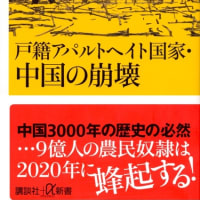10/15/2011
Tokyo University of Marine Science and Technology's team released the results of an investigation to which it is supposed that high-concentration radioactive cesium was detected from the plankton extracted on the coast in Iwaki-shi, Fukushima in July, this year.
High concentration was similarly detected from the small benthic organism.
We regard also as the radioactive material of the first nuclear power plant of Fukushima, and are anxious about many big influences on the whole fishes which use plankton as food.
He is "food chain, and since there is no telling how Professor Takashi Ishimaru is condensed by the fish now, he needs continuous investigation.
"
The detected cesium has the high plankton near the coast, and a maximum of 669Bq /kilograms.
Moreover, it was detected from the brittle star of the benthic organism in 137Bq /kilograms.
Concentration will follow the benthic organism over many hours from now on gradually in order to take in the radioactive material precipitating to the seabed.
10/15/2011
東京海洋大チームが、福島県いわき市の沿岸で今年7月に採取したプランクトンから、高濃度の放射性セシウムを検出したとする調査結果を発表した。小型の底生生物からも同様に、高い濃度が検出された。
福島第一原発の放射性物質とも見られ、プランクトンを餌とする魚類全体への多い大きな影響が懸念される。
石丸隆教授は、"食物連鎖で、魚にどのように濃縮されるか今現在わからないので、継続的な調査が必要だ。"
検出したセシウムは、沿岸近くのプランクトンが最高で669Bq/kgと高い。
また、底生生物のクモヒトデからは137Bq/kgを検出された。底生生物は海底に沈殿した放射性物質を取り込むため、今後、徐々に時間をかけて濃縮が進んでいく。




















※コメント投稿者のブログIDはブログ作成者のみに通知されます